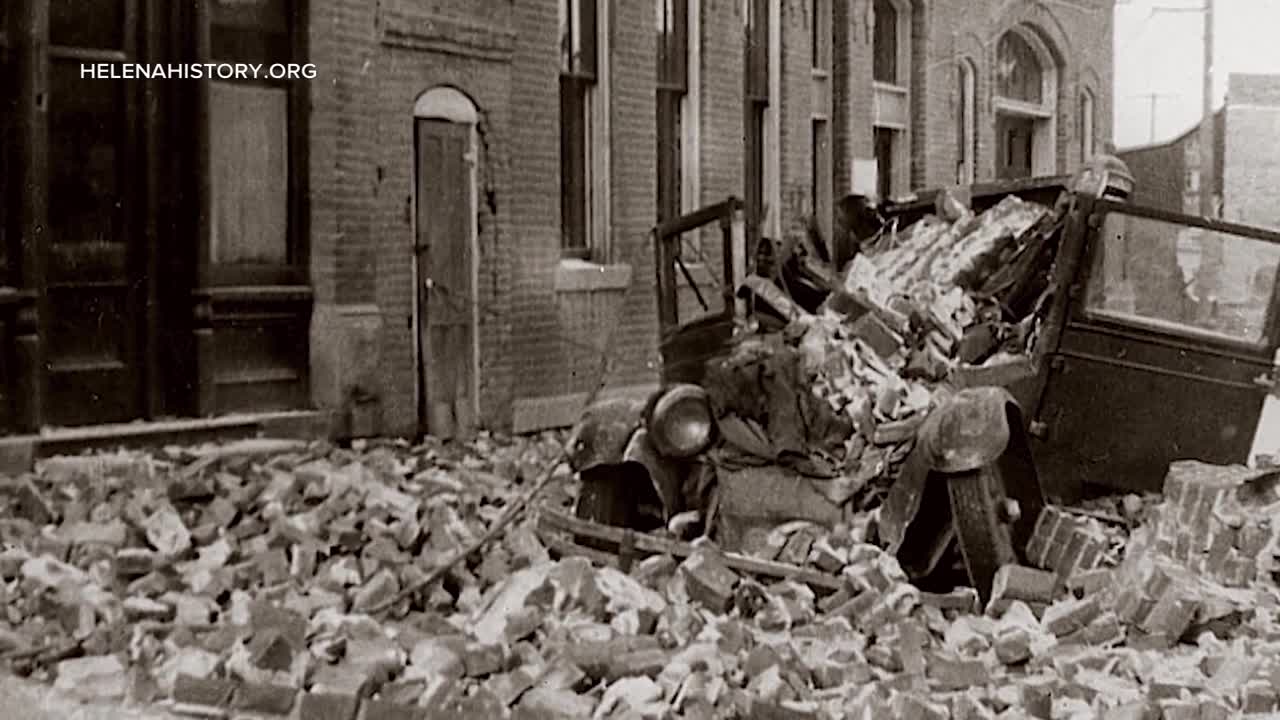HELENA — Pioneer Park in downtown Helena looks quite different from how it did back in 1935. Prior to the earthquake, the city hall stood there, but it was severely damaged during the event. City services were forced to evacuate, with the police department initially operating out of a patrol car parked in a vacant lot until an alternative option was worked out.
This raises the question: should another major earthquake happen, how do emergency resources respond?
“Preparedness is key,” Kyle Sturgill-Simon, the Lewis and Clark County Emergency Manager with Montana Disaster and Emergency Services, said.
(WATCH: Emergency services discuss how the modern response would differ from 1935)
Helena did not have a dedicated Disaster and Emergency Services department in 1935, like it does today.
The agency uses the lessons of the past to prepare for the future. Sturgill-Simon said, “Knowing which areas were impacted most, the city and also the valley, Helena Valley helps us know what is at risk, what facilities are most likely going to be impacted, and what we need to have ready and in place for when it happens in the future.”
The most important role of DES in the immediate aftermath is creating communication between those responding and the people impacted.
Emergency alerts would be sent out, and temporary shelters and triage facilities would be created as needed.

"In the case that first responder facilities and equipment are destroyed, surrounding communities, civilian partners, and state resources would come into play. “We have a plan in place for mutual aid partners, and then we have a plan in place to make sure that all of our government functions can still continue to work, have the public meetings, and make the government decisions they need to make,” Sturgill-Simon said.
But it is not just agencies and facilities that need to be prepared; you should have a plan too. Having things like a 72-hour go kit at both home and work and a family communication plan are critical.
“Make sure you are in a safe place immediately,” Sturgill-Simon said. "The instinct is to run outside, but unfortunately, the 1935 earthquakes were related to debris falling off the fronts of buildings.”

Another piece of the emergency response plan is checking the impacted buildings. “If the building is standing and, you know, our inspectors would go in, they would do an evaluation, determine if, you know, it is safe to be in to start with,” said City of Helena Chief Building Official Kimberley Mack.
In Helena, most facilities are on generator backup, and power companies are partners in the emergency plan to shut off if need be to limit the risk of fires.
Water mains for the City of Helena have earthquake-detecting devices to shut off automatically, and if you can, turn off your gas line.
Sturgill-Simon said, “Knowing that earthquakes will impact the area again, we do as much as we can to make sure that our infrastructure is hardened for it, our responsibility is planned for, and we really need the population to have their preparedness in line and be ready.”
To learn more about how to prepare for an earthquake, visit this link, and for more on local emergency services, click here.




